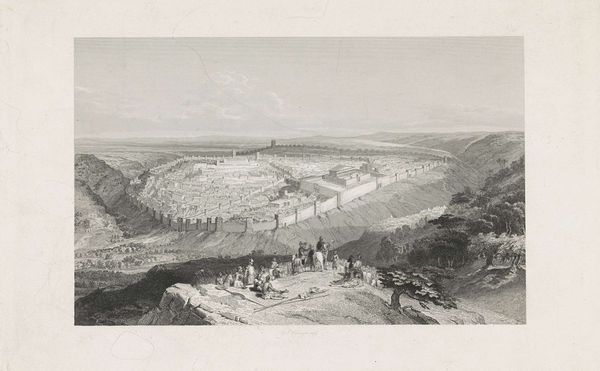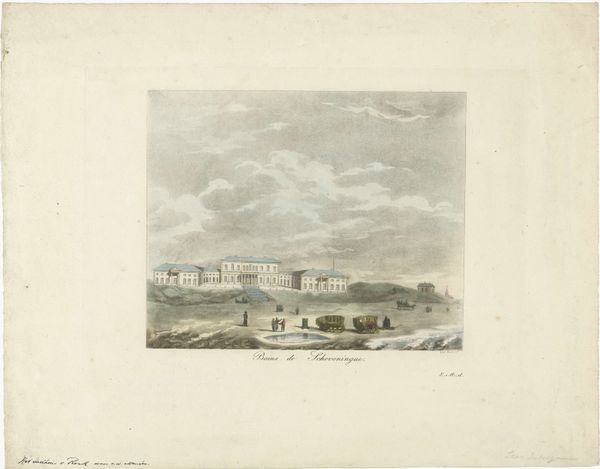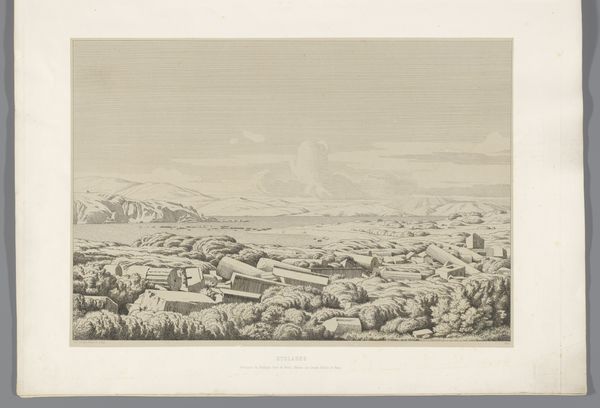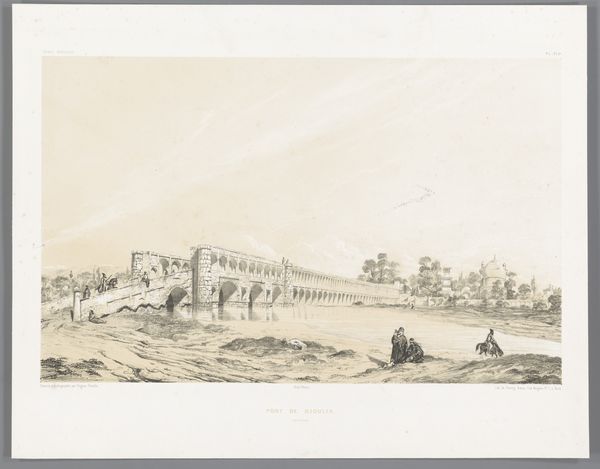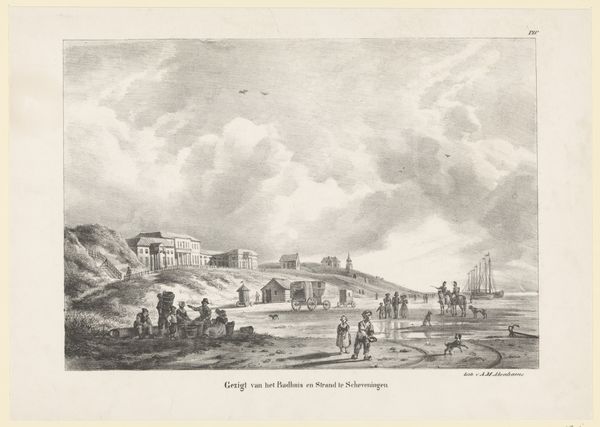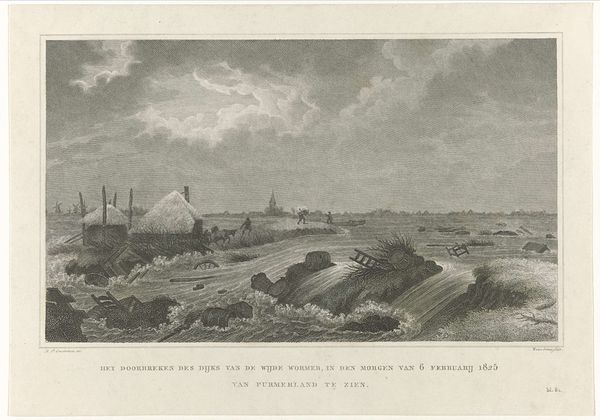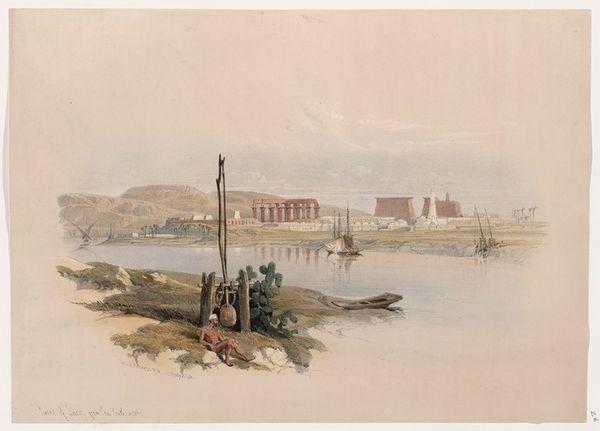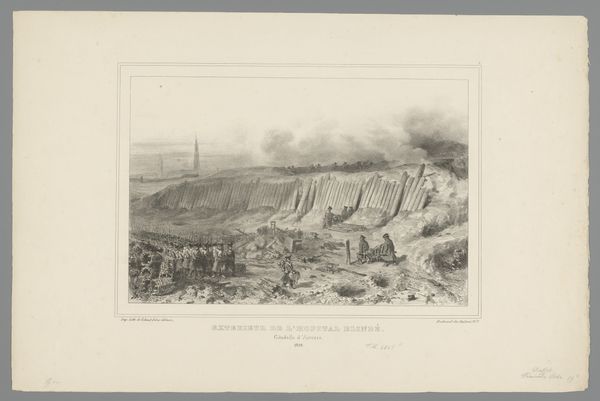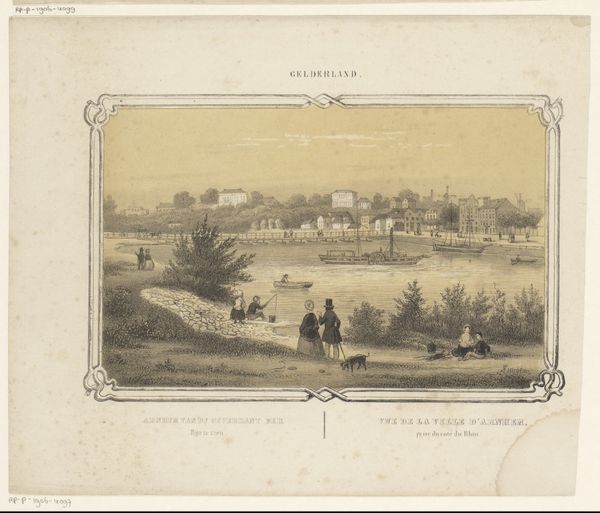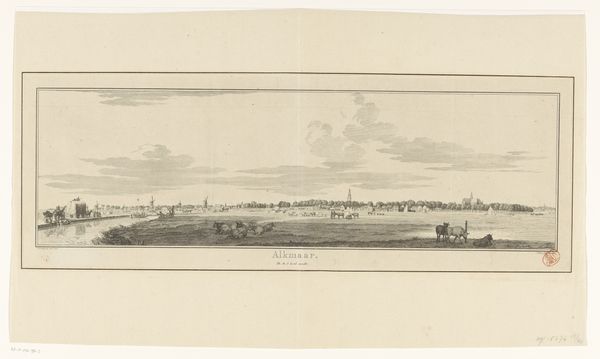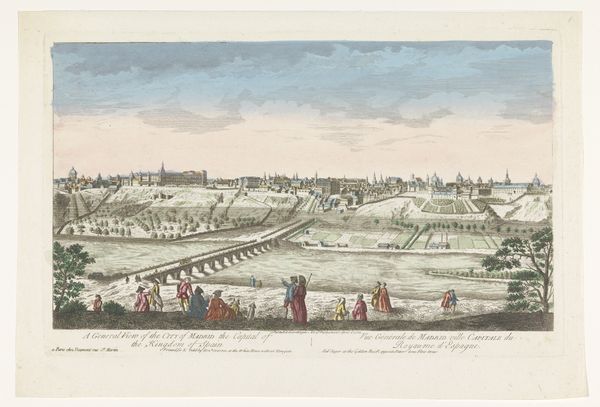
Dimensions: height 445 mm, width 620 mm
Copyright: Rijks Museum: Open Domain
Curator: Here we have a print called "De Haven van Sebastopol, 1855", or "The Harbour of Sevastopol, 1855," attributed to Vincent Brooks, found here at the Rijksmuseum. It seems to combine lithography with watercolor, giving it a distinctive look. What do you think of it? Editor: It has this overwhelming feeling of muted tension to it. I'm struck by the palette - how the subdued colours amplify this silent weight and industrial sombreness that practically whispers through the cityscape. Curator: Absolutely, the muted tones lend a documentary feel, yet there's also a stark Romantic sensibility about it. Look how the composition invites the eye to wander through layers of what seems to be the war infrastructure. The architectural lines, rendered with what looks like precise draftsmanship, feel loaded with anticipation. Do you think this romanticized perspective adds a psychological depth? Editor: Totally. It's as if Vincent Brooks captured this place as a theatrical scene frozen right before a climactic act, inviting our imaginations to project ourselves within it. The figures feel so minute amidst all this calculated construction. And what's with those precise lines; they speak of planning and domination over this strategic space. It has something disturbing within its serenity. Curator: This kind of romantic depiction, particularly of military sites, played a critical role in shaping public perception during times of conflict. By elevating the scene, and filtering reality through an aesthetic lens, Vincent Brooks certainly seems to be embedding emotional narratives onto what are otherwise technical structures. He invites us into this world, lets us linger with the shadows, to reflect, to understand something of a greater truth, maybe. Editor: Precisely. This harbour and dock feels almost symbolic - a monument of that time, captured not as chaotic combat, but still as an omen. It speaks to the intersection between technological advancements and emotional realities that still reverberate today. And with the softness from the watercolour...there's a fragility there too, like this imposing landscape exists as a memory. Curator: I hadn't considered it in terms of memory before, and I agree it leaves a powerful impression, prompting us to question how we immortalize scenes of industrial ambition and human conflict through art. Editor: Agreed, seeing this, I am also thinking about what we choose to represent today. Food for thought.
Comments
No comments
Be the first to comment and join the conversation on the ultimate creative platform.



